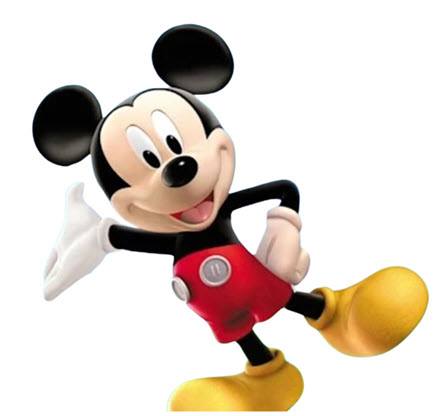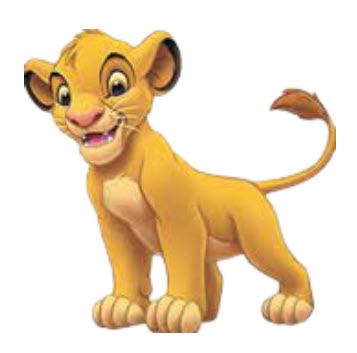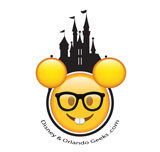Welcome to todays post where I’ll be shining a spotlight onto 7 classic Disney characters and uncovering what makes them so special.
For over 95 years, Disney characters have occupied a special place in popular culture. The animated stars of classic Disney films, from Mickey Mouse to Elsa and Moana, have become truly iconic figures.
Their stories continue to enchant and inspire new generations of fans and viewers.
It’s easy to see why Disney characters endure while so many other pop culture phenomena fade away.
At their best, these protagonists tap into timeless themes of hope, courage, friendship and imagination.

They crystallize these universal qualities into colourful, larger-than-life figures immediately recognizable through their signature visual designs and songs.
Once introduced on screen, Disney characters live on forever in the hearts of fans and the endless products bearing their likenesses.
The most popular ones like Mickey Mouse or Snow White drive massive merchandising campaigns and theme park attractions decades after their debuts.
Their faces adorn t-shirts, toys and collectibles in every corner of the globe.
The purpose of this blog post is to look into the histories, personalities and iconic moments behind some of Disney’s most beloved character.
What exactly makes specific figures so compelling and uniquely enduring?
Learn the backstories of how they were created by Walt Disney Studios and evolved over decades.
Additionally, explore the signature character traits audiences relate to and standout scenes that elevate them to legendary status.
Whether reminiscing about old favourites or discovering new details on Cinema’s most enduring icons, this guide provides a comprehensive look at the Disney Legends behind the magic.
The Importance of Disney Characters
Walt Disney Studios’ animated protagonists hold a unique place in global popular culture. While many entertainment phenomena eventually fade in relevance, Disney characters seem to only become more embedded into the collective consciousness with every passing decade.
At this point, they have become ubiquitous symbols woven into childhood memory and nostalgia for generations of fans.
The most iconic ones like Mickey Mouse transcend their initial films or cartoons to serve as mascots for the Walt Disney brand as a whole.
Mickey’s smiling silhouette immediately conjures images of magical kingdoms and happily ever afters.
Beyond their status as corporate ambassadors, Disney characters also informally act as educators to young audiences.
Countless children first learn moral lessons about goodness, bravery and wickedness from these anthropomorphic animals and celestial princesses.
They provide many’s first introduction to creative stories, outside perspectives and helpful life lessons communicated through engaging films and shows.
Of course, the overwhelming success of Disney films into lucrative merchandising bonanzas ensures their protagonists constant visibility too.
These characters universally appear on everything from clothing, toys and collectibles to video games, books, furnishings and more.
Every t-shirt proudly displaying Mickey ears or a Frozen Scene revives interest in their stories and personalities for future fans.
Disney likely will continue introducing new charming characters just as older ones like Snow White comfortably settle into venerable icon status.
However, all the studio’s magical protagonists new and old help inform childhoods worldwide with positive messages, unforgettable music and continually renew interest in Disney magic for every next generation.
Their importance as culture symbols and educators is sure to persist thanks to their integrity, relatability and fun backstories kids never tire of.
Character Profile Format
To showcase Disney’s most enduring animated icons, this post will profile a selection of the studio’s classic characters in detail.
Each character profile will use the following consistent structure to give readers a comprehensive overview:
Introduction: A brief background explaining who the character is and why they were selected for inclusion. This establishes common context for readers less familiar with the property a character stars in.
History: An overview tracing the origins of the character and their initial creation at Walt Disney Studios. This explores the real-life inspirations, voice actors, animators and source material that shaped their earliest appearances.
Personality Traits: An analysis of the core personality traits that define each character. From optimistic to mischievous, courageous to cunning, this section calls out strengths, flaws and distinctive qualities they exhibit.
Iconic Moments: Examples of the character’s most legendary and defining scenes from Disney history. Whether sad, funny or triumphant, these impactful moments crystallize why the character remains so beloved and memorable.
By following this standardized profile outline across characters, you can more easily compare and contrast roles in the Disney pantheon.
The structured format also ensures crucial background context and analysis exists in one place regarding both obscure and immensely popular magical Disney stars.
It enables both nostalgic fans and newcomers to enjoy learning new insights about icons they know and love.
Mickey Mouse
No Disney icon enjoys the global fame and ubiquity of Mickey Mouse. Debuting in 1928’s Steamboat Willie cartoon short, this anthropomorphic mouse rapidly rose to fame as Walt Disney Studio’s biggest animated star.

Today, his smiling silhouette serves as the emblem of the Magic Kingdom empire.
History
Mickey Mouse originated from the mind of young animator Walt Disney in1928. Seeking a breakthrough character to propel his studio, he sketched a simply designed mouse inspired by both his pet rodent and Charlie Chaplin’s endearing tramp character.
After drafting concepts, Disney worked with chief animator Ub Iwerks to finalize Mickey’s visual details like oversized ears and eyes.
After lacklustre test screenings, Mickey finally struck pop culture gold later that year in pioneering sound cartoon Steamboat Willie.
His plucky personality and synchronized sound effects drove breakout popularity. Disney soon made Mickey Mouse cartoons into one of Hollywood’s most beloved and commercially successful series.
Personality Traits
As Disney’s poster child hero, Mickey Mouse exhibits optimism, resourcefulness and pluck in the face of any adversary.
His wide-eyed curiosity leads him on fantastical adventures, whether solving silly mysteries or battling Peg-Leg Pete pirates.
Underneath his polite, almost old-fashioned manners lies a subtle mischief and playfulness toward authority figures like nemesis Pete.
Mickey approaches life’s storybook journey with enthusiasm and humour.
Iconic Moments
- Steamboat Willie (1928) – Mickey’s 1st appearance cemented his stardom
- The Sorcerer’s Apprentice (1940) – Mickey brings alluring magic to life in Fantasia
- Theme parks (1955 onward) – Mickey stars for decades as Disney’s beloved ambassador
Cinderella
The story of Cinderella, the kind maiden who triumphs over cruelty to attend a royal ball, dates back centuries as one of history’s most enduring fairytales.
Walt Disney Studios immortalized its own animated version of the classic narrative in 1950, turning the protagonist into an icon for perseverance and optimism.
History
The folk tale of the young Cinderella oppressed by her wicked stepmother and stepsisters originated as early as 9th century China.
The story endured for generations, traveling across cultures before arriving in 17th century France.
After many oral and literary retellings, Disney Studios tapped screenwriter Bill Peet to craft an idealized animated film adaptation released in 1950.
This would realize director Wilfred Jackson’s vision of a Cinderella grounded in sweetness and realism versus caricature.
Personality Traits
Disney’s Cinderella film conceived its fairy tale heroine as the personification of kindness, resilience and hope despite her tragic circumstances.
She retains a humble, upbeat attitude while enduring endless abuse from her cruel step family. Cinderella’s pure-hearted, gentle perspective touch the lives of both talking mice friends and eventually Prince Charming himself.
She exemplifies perseverance and courage to never abandon her dreams.
Iconic Moments
- Fairy Godmother Transformation (1950) – Cinderella’s rags turn into an ornate ball gown
- Royal Ball Dance (1950) – Cinderella and Prince Charming share a romantic dance
- Trying the Glass Slipper (1950) – The slipper only fits Cinderella’s foot, proving her identity
Simba
As the prodigal prince at the heart of Disney’s beloved 1994 film The Lion King, Simba anchors a dramatic coming-of-age tale Shakespearean in scope.

His journey from wide-eyed cub to rightful lion king remains among Disney animation’s most powerful stories about destiny and overcoming grief.
History
The Lion King sprang from screenwriter Irene Mecchi’s idea of adapting Shakespeare’s Hamlet tragedy into an animal kingdom setting.
The young lion prince Simba filled the film’s central role of fulfilling his destined arc from innocence to sober wisdom on the throne.
Directors Roger Allers and Rob Minkoff led intense years of animation development to fulfil this epic vision for a operatic adventure in the African savanna.
Personality Traits
As a cub, Simba begins life utterly curious and reckless, naively disobeying rules meant to protect him as future king.
His blissful, brave childhood leaves him vulnerable however to manipulation from sinister uncle Scar, who fills Simba with misplaced guilt for his father King Mufasa’s death.
Only by coming of age through self-imposed exile can Simba complete the mature metamorphosis necessary to reclaim the Pride Lands’ throne.
Iconic Moments
- Circle of Life Opening (1994) – Baby Simba’s magical debut before assembled animals
- Mufasa’s Ghost (1994) – A spectral vision compels Simba to embrace his royal destiny
- Battle with Scar (1994) – Simba returns to depose his cruel uncle and take his father’s place
Elsa
Disney’s 2013 blockbuster Frozen ushered in a revival for Walt Disney Animation both commercially and critically.
At the film’s emotional core stands Queen Elsa, whose struggle to control her icy magic powers and self-imposed exile from society struck a chord with audiences worldwide.
History
Directors Chris Buck and Jennifer Lee developed Frozen for years in hopes of recapturing the Disney Renaissance era of the 1990s peak.
They anchoring the visual splendour of an ice-bound fairy tale kingdom around two orphaned sisters, optimistic Anna and reserved Elsa, the latter of whom is first in line for the throne.
Concealing a magical ability to manifest ice and snow since childhood, Elsa must grow into independence and self-acceptance over the course of her coronation and kingdom’s endangerment.
Personality Traits
Burdened by the expectation of one day ruling Arendelle, Elsa grows up grappling with emotional isolation and fear of her uncontrolled magic hurting others.
She often adopts a cautious, measured and mature persona as the future queen. At heart Elsa yearns for independence and acceptance, demonstrated beautifully via her show stopping anthem “Let It Go.”
Ultimately she completes an emotional journey toward embracing her unique talents and mending bonds with beloved sister Anna.
Iconic Moments
- “Let It Go” Musical Sequence (2013) – Elsa indulges her powers freely away from judgment
- Coronation Gone Awry (2013) – Elsa’s abilities unwillingly revealed on her big day
- Reuniting with Anna (2013) – Elsa returns to undo Arendelle’s icy curse by embracing love
Buzz Lightyear
The courageous space ranger Buzz Lightyear became an instantly beloved addition to Disney/Pixar’s groundbreaking Toy Story animated franchise.

As Sheriff Woody’s rival turned loyal friend, Buzz anchors the CGI film series’ delightful exploration of toys secretly leading lively adventures.
His path from deluded hero to down-to-earth buddy endures as one of family film’s most entertaining character arcs.
History
Buzz sprang from the mind of Pixar animator Jeff Pidgeon, who envisioned an action figure convinced of actually being the spacefaring adventurer his toy embodied.
Director John Lasseter expanded this into an entire mismatched buddy comedy pairing Buzz with cowboy doll Woody, two alter-egos vying for position as young Andy’s favorite toy.
The fully fleshed out Buzz that arrived in 1995’s Toy Story exemplified Pixar’s then-revolutionary advances rendering computer animation uncannily lifelike.
Personality Traits
When initially introduced, Buzz brims with bravado about his own squared-jawed space ranger prowess and gadgets.
This blusters masks his underlying lack of self-awareness that he remains just an inanimate kids’ toy. Nonetheless, Buzz’s imagination and loyalty towards friends Andy and the toys runs boundless.
He approaches adversities with resourcefulness and assurance thanks to his identity as a galactic guardian.
Iconic Moments
- Flying Introduction (1995) – Buzz attempts to fly proudly before crashing down to Earth
- Confronting the Truth (1995) – A commercial exposes to Buzz his true origins as a toy
- Farewell to Andy (2010) – A college-bound Andy gifts Buzz and Woody to young Bonnie
Ariel
Disney’s 1989 animated blockbuster The Little Mermaid ushered in an animation renaissance on the strength of its captivating lead heroine, the romantic daydreamer Ariel.
Her quest to experience life on land and passion for Prince Eric enchanted audiences. The film transformed her into one of Disney’s most beloved princess icons.
History
Danish author Hans Christian Andersen originally conceived the metaphorical 1837 fairy tale “The Little Mermaid” about a sea maiden bargaining her underwater life for human love.
While retaining the core premise, Disney animation shaped an ebullient original story anchored around a free-spirited mermaid enamoured with mankind’s world.
lyricist Howard Ashman conceived the idea of Ariel then collaborating with directors Ron Clements and John Musker.
Personality Traits
Independent and often rebellious, Ariel exhibits endless fascination with human culture, from collecting its trinkets to gazing longingly upon passing ships.
She chafes under her widowed father King Triton’s restrictive rules limiting contact above the sea.
Ariel’s curiosity, conveyed beautifully in signature song “Part of Your World,” proves all-consuming to the point of bargaining away her mermaid abilities to experience her dream.
Ultimately she completes an emotional voyage from reckless teen to mature woman.
Iconic Moments
- “Part of Your World” musical number (1989) – Ariel confesses her human collectibles and land dreams
- Becoming Human (1989) – King Triton’s magic transforms Ariel’s tail into feet
- Wedding Prince Eric (1989) – Ariel marries her true love after saving him from drowning
Winnie the Pooh
The gentle teddy bear Winnie the Pooh and his friends in the Hundred Acre Wood have delighted readers and viewers for nearly a century.

Beginning as characters in English author A.A. Milne’s children books, Pooh and his cohort found new fame through Walt Disney Studios’ animated adaptations beginning in the 1960s.
Several theatrical shorts and films showcased Pooh’s kind-hearted spirit.
History
English writer A.A. Milne created Winnie the Pooh and friends like Piglet, Eeyore and Tigger in a series of poetry collections and short stories for his son published from 1924-1928.
Enchanted by the writings, Walt Disney Productions licensed rights to the characters.
Disney developed a series of animated Pooh vignettes bundled into short films like 1966’s Winnie the Pooh and the Honey Tree establishing their visual designs.
Personality Traits
Winnie the Pooh lives a very simple life motivated chiefly by his unrestrained love of honey (“hunny”).
Despite his limited intellect, Pooh bears genuinely cares for his friends, offering a humble wisdom and selfless generosity that binds together the community.
His peaceful, traditional rural life allows all sorts of gentle adventures and frequent life lessons. Even when faced with unsolvable problems, Pooh remains unflappably calm, frequently inspiring Piglet, Eeyore, Tigger and others.
Iconic Moments
- Honey Tree Climb (1966) – Pooh craftily climbs a massive tree to get to a bee hive’s honey
- Stuck in Rabbit’s Hole (1977) – Pooh eats so much honey he gets stuck exiting Rabbit’s burrow
- Pooh’s Grand Adventure (1997) – Pooh goes on an epic journey to save Christopher Robin
Conclusion
As these character profiles showcase, Disney films have introduced audiences to a diverse cast of now-beloved iconic personalities like Mickey Mouse, Elsa and Winnie the Pooh.
Though originating decades ago for many, these animated heroes, heroines and friends still resonate through well-crafted backstories and appeals to universal themes.
Revisiting Disney classics allows fans young and old alike to reconnect with core qualities embodied by these characters, whether courage, optimism, wisdom or independence.
The profiled figures also demonstrate Walt Disney Animation’s legacy talent crafting magnetic, musical tales potent enough to inspire endless generational nostalgia and fandom.
With over 90 years of ever-evolving filmmaking history behind it, Disney surely will produce many more charismatic animated stars for decades to come.
For now, their existing pantheon offers something for all tastes, whether in courageous lion kings, valiant space rangers or romantic fairy tale heroines.
The common threads binding together favourites old and new remain their emotional honesty and ability to rekindle childlike imagination regarding life’s endless possibilities.
What beloved Disney characters or personal iconic moments hold a special nostalgic meaning to you?
Share your favourites along with ideas for other characters worthy of a spotlight profile in future blog entries.
Between theatrical shorts, films and television series, Walt Disney Animation Studios has brought to life hundreds of now-legendary figures, so there remains no shortage of magic to reconnect with or discover for the first time.
